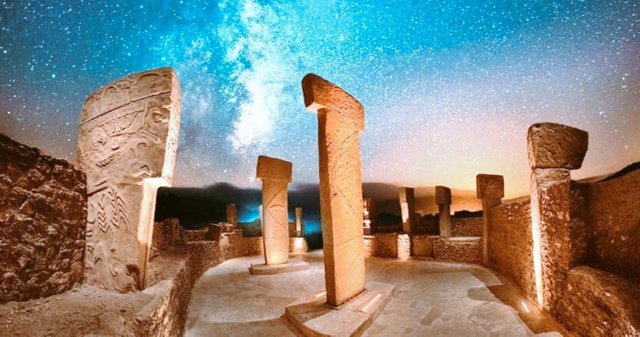Neolithic cultures in all likelihood erected monuments to venerate the precessions, observe the solstices and equinoxes, Göbekli Tepe is no exception. At Göbleki Tepi the people used stone cutting to create reliefs as was common during the Neolithic.
The relief of Pillar 43, the Vulture Stone, depicts the star Vega from the constellation Lyra crossing over the Equinoctial Colure on the winter solstice. This could have been deduced by tracking the midnight meridian on either of the equinoxes. The pillar shows the visible constellations along the Milky Way during the winter nights.
On the winter solstice of 10,017 BCE the galactic equator cross the celestial equator and the midnight meridian, an event rare enough to be venerated. I am of the opinion that it was this event, along with the tracking of Vega as it crossed the Equinoctial Colure, that were among the prime motivators of this site’s construction.
On Pillar 43 a disc shaped figure was used to represent Vega, perhaps to signal it as a pole star. Vega was close to being the pole star and so it is likely that the disc represents the axis of rotation of the earth. The distance of Vega to the North Celestial Pole provides the symbolic radius of the circle. The same idea was presented in my post about Protodynastic Egyptian Astronomy.
The observational techniques observed at Göbleki Tepe are the same as observed at Nabta Playa (South Egytpt c. 4,800 BCE) and in Upper and Lower Egypt (c. 3,100 BCE). During the Neolithic the focus always seems to be on the midnight meridian and its relation to the solstices and equinoxes. Read more...
